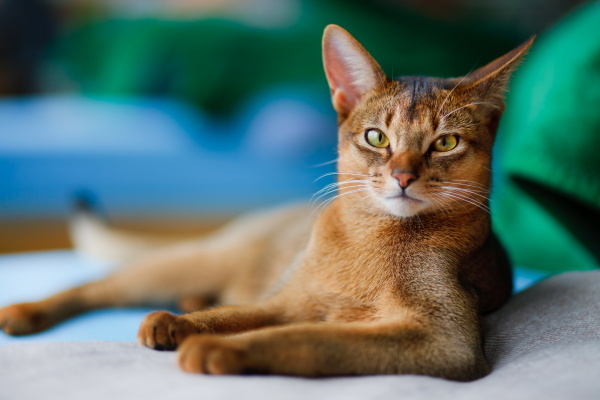Tails
Making pet parenting easy

Abyssinian
This entry was posted on 2014-07-16.
Personality and Temperament
The characteristics that differentiate this breed are inquisitiveness, bravery and high spirits. The Abyssinian doesn’t like to be handled constantly. It will insist on taking part in everything its owner does but on the other hand has an independent mind. An example of this is; while your eating it may attach itself to your leg.
This is a very playful and frisky breed that will always make you laugh. Its loves being under the covers with you, perching on your shoulder and will appear on your lap when you least expect it. It would possibly then go and jump of the tallest bookcase or swat a few imaginary things.
The Abyssinian will provide your family with constant entertainment, so their will certainly never be a dull moment. Once everyone in the family is over playing with the Abyssinian, it has no problem entertaining itself for hours.
Traits
• Weight: 4-7.5 kg
• Height: Medium
• Coat: silky, short, resilient and dense
• Colour: red, ruby, blue and fawn
• Litter size: About 6 kittens
• Life span: 9-15 years
Physical Characteristics
The Abyssinian is classified under agouti or ticked breed, which describes the cats type of fur. Its distinguishing feature is its sleek multicoloured coat, which consists of lots of different colours on each hair shaft. Every strand of hair has light and dark bands, which end in dark tips. This is how the cat gets its ticking appearance, which makes it very appealing to observe.
The Abyssinian has almond-shaped eyes that are coloured green or gold. It is medium in size, with an elegant walk and well-developed muscles.
Health and Care
This breed is full of energy and gets its much-needed exercise by playing around the house and garden. A brilliant way to bond with this cat is through grooming or just general cuddling.
The Abyssinian is usually a very healthy breed, but can suffer from tooth decay and gingivitis. Furthermore they are also prone to suffer from amyloidosis, which is an organ disease that is thought to be inherited.
History and Background
There is a great deal of mystery as to where the Abyssinian originated. Nevertheless there is some proof that today’s Abyssinian has a remarkable resemblance to that of the cat sculptures and murals the ancient Egyptians used to worship.
In recent genetic research they have found that the cat may have originated from a breed, located on the coast of the Indian Ocean and Southeast Asia. The main consensus among all breeders is that the indigenous Abyssinian line has died and for recreating the breed they give credit to the British breeders.
The first Abyssinian to be recorded was Zula. The cat was explained and physically detailed by Dr. William Gordon Stables in his 1876 book. During World War II the British efforts in cultivating the breed were wiped out and when the war ended they had to start again.
Only in the 20th Century was the Abyssinian identified by the United States. In 1909 the breed was first exhibited in the Boston, Mass. Only in the 1930s did the breed actually start to show success. Their successes were still limited as many of their offspring had the tendency to die young. Nevertheless a red coloured cat named Ras Seyum was imported from Britain into the U.S in 1938. The cat started to become very popular among cat devotees and this lead to more British imports of the breed. Today the Abyssinian is in the top 10 most popular cats.
Nutrition
Click here to see what breed specific pet food we sell now.


